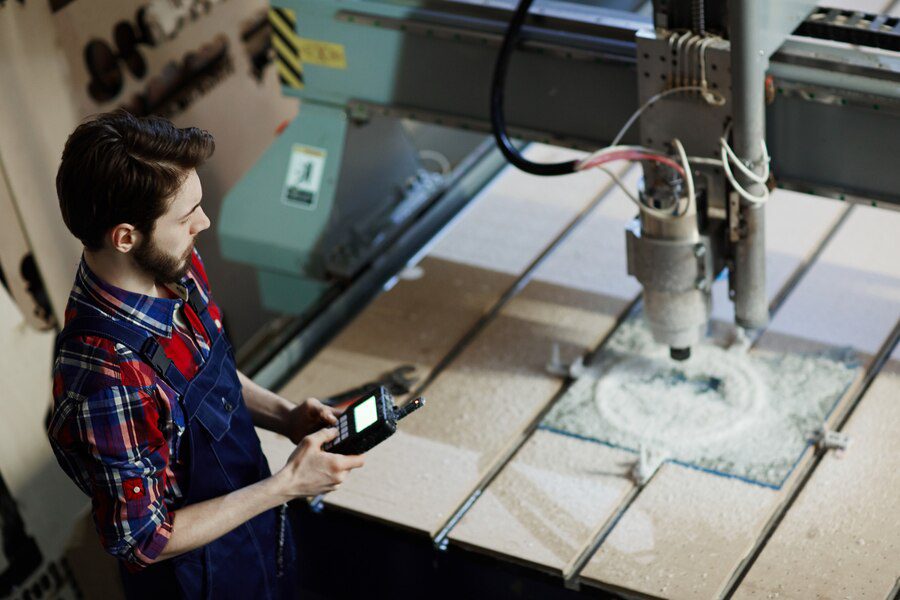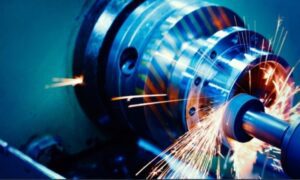Hey there, fellow machinists! Let’s dive into the world of CNC machined parts and explore how they’re shaping the landscapes of various industries. From automotive engineering to cutting-edge medical devices, CNC machining has become the backbone of modern manufacturing, revolutionizing the way we design, produce and innovate.
Imagine a world where precision meets creativity, where complex geometries are brought to life with unparalleled accuracy. That’s the power of CNC machining – a technology that has transformed the way industries operate, delivering components that are not just functional but flawlessly crafted.
In this journey, we’ll uncover five key industries that stand to gain the most from the wonders of CNC machined parts. Let’s begin.
#1. Automotive Industry
In the automotive industry, CNC machined parts play pivotal roles across various critical components. Engine components, including cylinder heads, pistons, crankshafts, and engine blocks, benefit from the precision offered by CNC machining, ensuring optimal performance and durability.
Moreover, CNC machining is indispensable in crafting components for vehicle chassis and suspension systems such as control arms and steering knuckles, where precision is paramount for proper alignment and handling. Furthermore, the automotive sector’s adoption of aerospace-grade materials and manufacturing techniques underscores the importance of precision machining in producing high-performance vehicles, reflecting the integration of aerospace applications within automotive engineering.
#2. Medical Devices
In the realm of medical devices, CNC machined parts serve as indispensable components, ensuring the reliability and precision vital for patient care. These parts, intricately crafted using CNC machining technology, underpin the functionality of medical equipment with exacting standards.
Moreover, CNC machining offers unparalleled advantages in customization and prototyping, allowing manufacturers to tailor devices to individual patient needs while streamlining the design iteration process.
Crucially, adherence to stringent regulatory standards is facilitated by CNC machining’s ability to consistently produce parts that meet or exceed regulatory requirements, ensuring the safety and efficacy of medical devices in compliance with industry regulations.
#3. Electronics and Technology
In the dynamic realm of electronics and technology, CNC machined components stand as the backbone of innovation. As electronic devices continue to evolve, the utilization of CNC machining becomes pivotal in crafting intricate components that fuel optimal functionality.
The precision afforded by CNC machining is particularly crucial for achieving miniaturization and complex geometries, addressing the demand for smaller and more advanced electronic devices. This technology not only supports the trend towards compactness but also plays a key role in enhancing the performance and reliability of technology products.
Through stringent quality control measures, CNC machined parts ensure consistency, durability, and efficiency, contributing significantly to the seamless operation and longevity of modern electronic devices and technology advancements.
#4. Aerospace and Defense
In the aerospace and defence sectors, CNC machined parts serve as the backbone of innovation and reliability. From aircraft structures to critical components for space exploration and defence systems, CNC machining technology ensures precision and durability in the most demanding environments.
By fabricating lightweight yet robust parts, CNC machining supports the construction of aircraft structures that meet stringent safety standards while also providing the necessary components for space missions and defence operations. The technology’s ability to meet stringent safety and reliability standards underscores its indispensable role in the aerospace and defence industries, where precision and performance are non-negotiable.
#5. Energy Sector
In the energy sector, CNC machining stands at the forefront of innovation and efficiency, catering to diverse needs across traditional and renewable energy domains. Within the oil and gas industry, CNC machining plays a pivotal role in crafting robust equipment and components that endure the rigours of exploration and extraction processes.
Simultaneously, in the realm of renewable energy, precision components fabricated through CNC machining bolster the performance of wind turbines, solar panels, and hydroelectric systems, facilitating the shift towards sustainable energy sources. By ensuring the efficiency and longevity of energy production processes, CNC machining emerges as a critical enabler of progress in the energy sector, supporting endeavours to meet growing energy demands while minimizing environmental impact.
Conclusion
In conclusion, the impact of CNC machined parts across various industries is undeniable. From precision engineering in automotive advancements to life-saving innovations in medical devices, CNC machining has revolutionized manufacturing practices. It has enabled unparalleled customization and prototyping capabilities in electronics and technology while ensuring reliability and performance in aerospace and defence applications.
Moreover, CNC machining plays a crucial role in driving efficiency and longevity in the energy sector, supporting both traditional and renewable energy production. Across these diverse industries, CNC machined parts continue to propel innovation, enhance productivity, and shape the future of manufacturing.



































